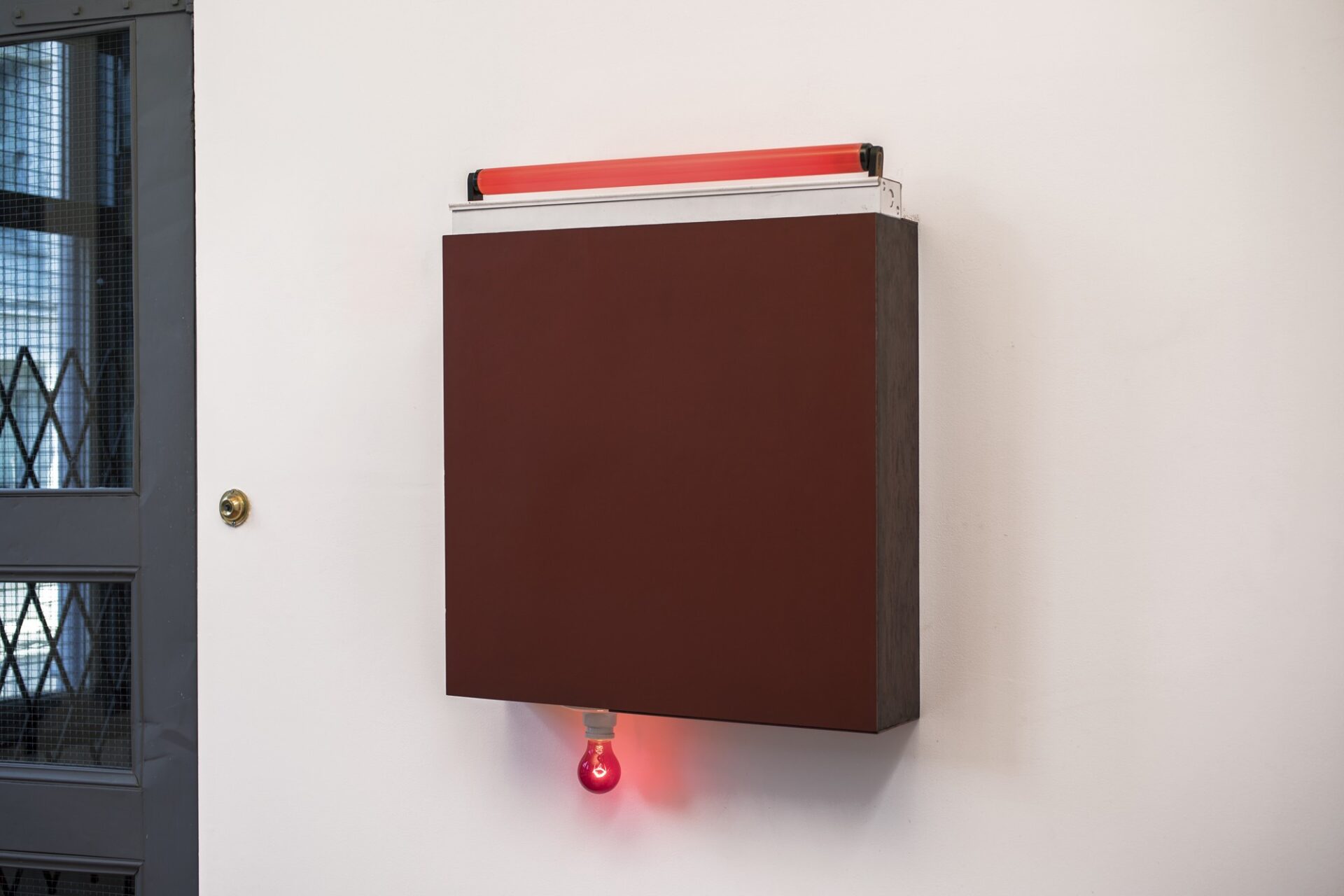Donald Judd met Dan Flavin in 1962 at a gathering in a Brooklyn apartment organized to discuss the possibility of a cooperative artist-run gallery. They exhibited together a year later when their work was included in New Work: Part I at Richard Bellamy’s Green Gallery, New York (January 8–February 2, 1963). As their mutual friend, the artist John Wesley, has said of their friendship, “[the two] became Flavin and Judd for a while. The two names were together.”1
Between 1961 and 1964, Flavin made a group of eight works that he titled icons. These were Flavin’s first works to include electric lights. Judd favorably reviewed Flavin’s first solo exhibition at the Kaymar Gallery in 1964, which contained icon III and icon VI, both of which he later installed at 101 Spring Street. In 1964, Judd wrote in Arts Magazine: “There are several interesting aspects to the pieces: they are things themselves; they are awkward; they are put together bluntly; the materials are considered bluntly—the paint is flat and the lights come that way; the lights are strong and specific. There are also several important negative aspects: the blocks are not paintings; they have none of painting’s scheme of something framed; they are not composed in the ordinary sense; they don’t involve illusionistic space; they don’t have modulated surfaces; they don’t play with parts of the world.”2
In a notebook entry dated August 9, 1962, Flavin wrote:
Last week in the Metropolitan, I saw a large icon from the school of Novgorod. I smiled when I recognized it. It had more than its painting. There was a physical feeling in the panel. Its recurving warp bore a history. The icon had that magical presiding presence which I have tried to realize in my own icons. But my icons differ from a Byzantine Christ held in majesty; they are dumb—anonymous and inglorious. They’re as mute and undistinguished as the run of our architecture. My icons do not raise up the blessed savior in elaborate cathedrals, they are constructed concentrations celebrating barren rooms. They bring a limited light.3
When installed in Flavin’s 1964 exhibition at Kaymar Gallery, this work was hung so that the red incandescent light bulb was on the “top” of the work. Later, when installed at 101 Spring Street in the early 1970s, this piece was oriented the other way up, with the incandescent light bulb hanging from the “bottom” of the piece.

